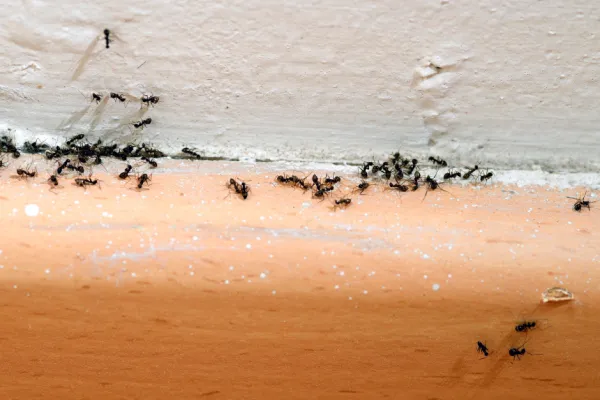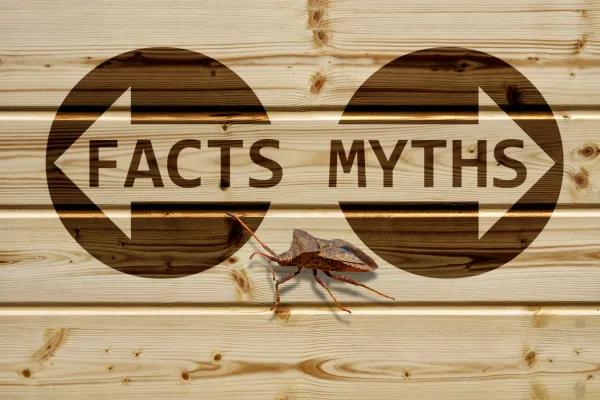A Guide to Treating Bites and Stings

How to Treat Bug Bites and Stings at Home
Summer is often synonymous with an abundance of sudden bites and stings from various pests, especially while you are trying to enjoy your favorite outdoor activities. Having a multifaceted pest control strategy and regular pest inspections from the expert technicians at Palmetto Exterminators truly are the best ways to prevent painful bites and stings. However, it's always helpful to know how to properly identify and treat bites and stings from the most prominent summer pests in the Southeast region should you need to!
While most reactions to insect bites and stings are mild, causing little more than redness, itching, or minor swelling, reactions from pests such as bees, wasps, hornets, and ants can result in severe allergic reactions for some. Since some pests can carry diseases including the West Nile virus, it's important to monitor reactions and take action if they worsen. If you get a bite or sting, immediately move to a safer area to avoid getting any more while you treat the affected area.
First-Aid for Bug Bites and Stings
Usually, the signs and symptoms of a bite or sting disappear on its own in a day or two. Having a sting or bite can be itchy, painful, and uncomfortable, nonetheless. If you get a bite or sting while spending extra time outdoors from some of these common summertime pests, here are a few tips and tricks to help alleviate the discomfort:

1. Chiggers
Chiggers, sometimes called red bugs, are tiny larvae that cause large bites. They attach to your skin when you least expect it, hopping from a blade of grass or vegetation when you spend time outside. Because of their red color, you may be able to spot these small critters from the start before they turn yellow after feasting on the skin.
Chiggers can attach for multiple days as they bite, making the bite marks red and painful. These bites often appear similar to welts, blisters, or hives with red dots in the center. Bites from Chiggers can take up to 3 weeks to heal, so if you suspect you have been bitten, you should take the following steps to treat the wound:
- Apply antiseptic to reduce the risk of infection.
- Apply calamine lotion, over-the-counter anti-itch cream or ointment to relieve itching.
- Avoid taking very hot showers or baths that will irritate your skin.
- Take a Benadryl or antihistamine to help relieve the itching.
Click here for more information on chiggers and how to treat their bites.
As with any bite or sting, should you experience an extreme reaction or suspect an infection, contact your healthcare provider immediately.

2. Fire Ants
Fire ants are small, aggressive, red or black venomous ants that leave you with a painful, stinging bite. These bites appear as swollen red spots that develop a blister or pustule on top that usually last about a week. In spring and summer, ant nests and their queen relocate outdoors to begin foraging for food and water, as these pests enjoy the heat, too.
This means that an afternoon of playing soccer or a backyard barbeque could mean contact with a pack of fire ants. If you feel or notice fire ant welts on the skin, the first thing to do is apply a cold compress to reduce itching and swelling. Following this step, it is best to:
- Place an ice pack or cold compress to relieve swelling.
- Apply hydrocortisone cream to the area to relieve itching.
- Use antibiotic ointment to prevent infection on any broken skin.
- Take an oatmeal bath to relieve itching.
Click here for more information on fire ants and how to treat their bites.

3. Fleas
Fleas are some of the smallest pests you'll encounter, only growing to be about as large as the tip of a pen. These thin bugs reproduce quickly and when you see one, there's often a large group closeby.
Pets can track fleas into your home and fleas can also be found hiding in your yard. Flea bites often appear as a cluster of small red bumps with a halo shape that begins to itch. If you see tiny bites in groups of three or more on your skin, it is best to follow these steps:
- Gently wash the area without scratching the bites.
- Apply an icepack frequently to help relieve swelling.
- Apply antihistamine, calamine lotion, anesthetic creams or similar to treat the itching to reduce swelling.
Click here for more information on fleas and how to treat their bites.
Contact your doctor if your symptoms worsen or if a secondary infection develops. If you begin to experience symptoms consistent with that of a possible tapeworm infection, contact your doctor. Fleas are able to transmit this parasite through their bite.

4. Hornets and Wasps
The sharp pain of a hornet or wasp sting can leave you in discomfort for hours after the initial contact. With this type of sting, washing the area to remove the venom is the most important step. You should also make sure to remove the stinger, if necessary. After cleaning with soap and water, continue with these steps:
- Place an ice pack or cold compress to relieve pain and swelling.
- Keep the sting clean and dry, after treating with a dab of vinegar.
- Cover the area with a bandage, if needed.
Click here for more information on hornets and wasps and how to treat their stings.
Treating bee and wasp stings depends on their severity. If you know you may be allergic, especially if you've had a severe reaction in the past when stung by a bee or wasp, seek medical attention immediately.

5. Mosquitoes
A mosquito bite is a small, round, puffy bump that appears soon after you've been bitten, often becoming red, hard, swollen, and itchy. You may even experience multiple bites in the same proximity.
Mosquito bites can happen when you least expect them, not noticing the bites until it is too late.
However, the pain of these annoying sores can be diminished through proper treatment. It is advised to:
- Apply hydrocortisone cream for itching.
- Create a baking soda paste: Mix water and baking soda together and apply to the bite to jumpstart the healing.
Click here for more information on mosquitoes and how to treat their bites.

6. Snakes
Snake bites should be handled with urgency, as it is often difficult to identify whether or not a snake is venomous. You should immediately seek medical help after receiving a snake bite, but can take these steps while waiting to receive attention from your healthcare provider:
- Have the injured individual lie down, with the wound below heart-level while keeping them calm and still to keep the venom from spreading.
- Remove any jewelry near the area and cover it with a loose, dry, and sterile bandage.
- Wrap a secondary bandage around the entire limb to reduce blood flow from the area.
If you have been bitten by a snake, do not wait to get treatment. Contact the nearest healthcare provider immediately.

7. Ticks
Ticks can be difficult to spot, especially when they attach in hard to reach areas. However, these pests can inflict serious damage if not addressed quickly. Because ticks burrow into the skin, they must be handled with extreme care. When removing a tick, one should:
- Avoid using your bare hands.
- Use fine-tipped tweezers to grasp as close to the skin's surface as possible.
- Pull upward with steady, even pressure, without twisting or jerking to avoid missing any parts of the tick.
- Wash the area and your hands with rubbing alcohol or soap and water following extraction.
- Never crush a tick - dispose of the tick properly.
Click here for more information on ticks and proper removal.
At-Home Solutions
To relieve any itching, swelling, or discomfort, there are a number of natural solutions that you most likely have in your home to try.
- Oatmeal relieves itching and swelling with anti-irritant qualities.
- Crushed ice can reduce inflammation for short-term relief.
- Honey reduces inflammation with its antibacterial and anti-inflammatory properties.
- Aloe vera heals minor wounds and infections with anti-inflammatory properties.
- Baking soda has sodium bicarbonate that provides relief to itchy bites.
- Vinegar is a natural disinfectant that can reduce stinging and burning.
Read more about these natural remedies here.
If you receive a bite or sting, be sure to avoid scratching the affected area as much as possible! This will only increase the natural histamine response of your body. Scratching insect bites can also lead to a secondary infection if you break the skin or reopen the wound. Dirt and bacteria under your nails can lead to staph, strep, and other infections.
Best Pest Control & Prevention
A great pest control strategy will significantly reduce the likelihood of bites and stings. Quarterly pest control inspections go a long way in maintaining a pest-free home throughout the year. The experts at Palmetto Exterminators offer over 58 years of professional pest control experience including Special Pest Services to suit your pest control needs. Contact Palmetto Exterminators today to schedule your free inspection!
Please note that Palmetto Exterminators is not a medical authority. This content is for informational purposes only and not intended to be a substitute for professional medical advice, diagnosis, or treatment. Always seek the advice of your local healthcare provider if you are experiencing extreme symptoms or are concerned about your bite or sting, even if your reaction is minor. If you think you may have a medical emergency, call your doctor, go to the emergency department, or call 911 immediately.


